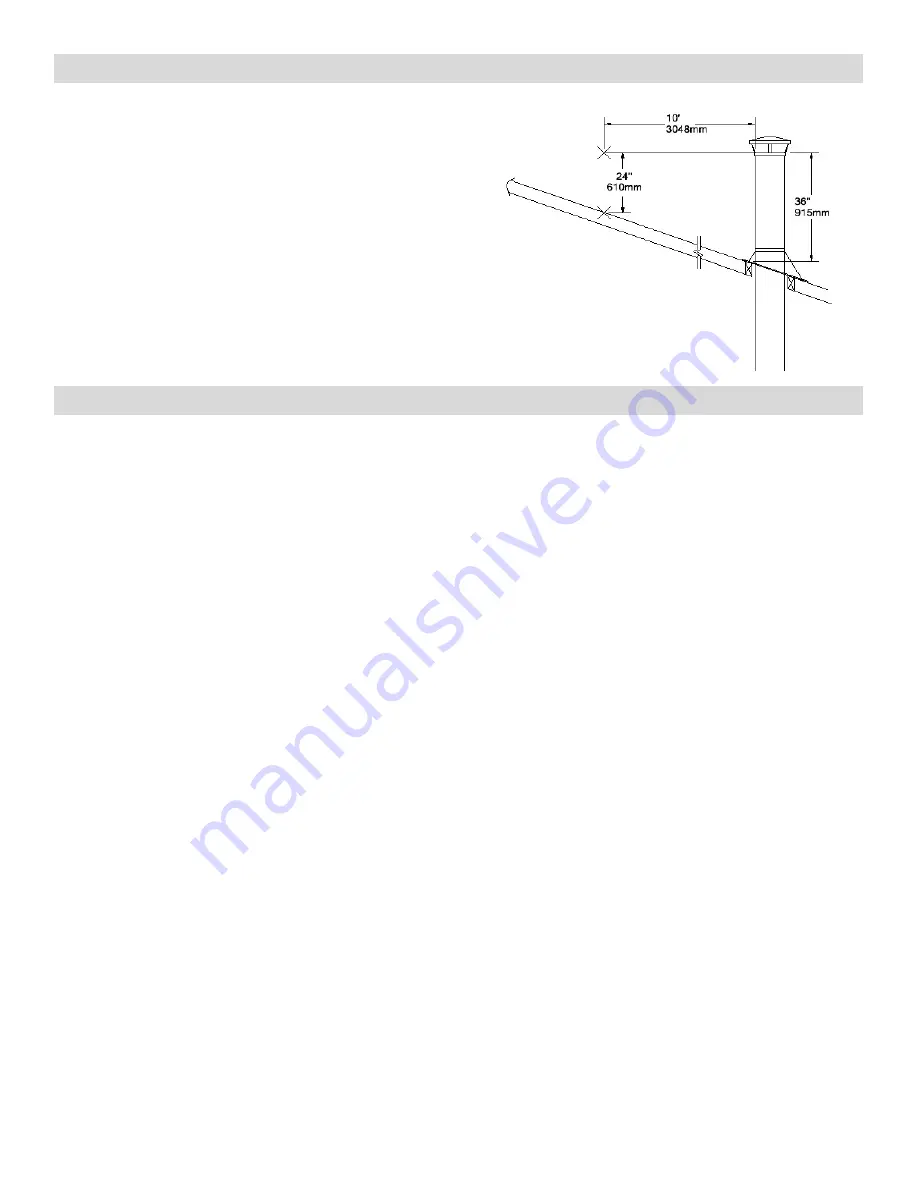
10
CHIMNEY MINIMUM HEIGHT
The chimney must extend at least 3’ (915 mm) past its point of
contact with the roof and must be at least 2’ (610 mm) higher
than any walls, roofs or buildings in a 10’ (3050 mm) radius. If the
chimney exceeds the roof by 5’ (1525 mm) or more, it must have
a chimney brace.
FRESH AIR INTAKE & BACK DRAFTING
An Evolution stove well installed should not produce any smoke in the house. If the stove produces smoke, it will probably
be for one of the following reasons :
1.
The external installation of the chimney is defective or incorrect, engaging in an air return problem and,
consequently difficult lightings.
2.
The heating of the chimney is insufficient. Not to forget that the hotter the stove is, the more the chimney will
intake smoke.
3.
The door or the air register input were closed again too quickly. The contribution of air is essential with the
maintenance of combustion.
4.
If the area is too airtight or the house presents a negative pressure and it does not have an external air intake, the
contribution of air to the stove will be more difficult than normal. Temporarily open a window near the stove to
increase it.
5.
Any ventilator (cook top exhaust fan, bathroom ventilator, central vacuum cleaner or drier) intakes the air towards
outside may create a negative pressure in the house. Close them or open a window near the stove to regulate this
problem.
6.
Wet wood releases more smoke while burning than seasoned wood. The wetter the wood is the less heat it
releases, the more it produces creosote. If the wood burnt is very wet, have the chimney inspected every month
that the stove is in use.
7.
Make sure that the chimney is reasonably clean and free of any obstruction.
8.
Check if the chimney is sufficiently high: a minimum of 3’ (914mm) above its junction with the roof (see the
drawing above). If not, add additional lengths of duct, which will increase the chimney’s draft and reduce the
smoke return tendency.
9.
A chimney joined to an external wall (see page 12 drawing on the right-hand side) without coating may often
cause problems. Open a window near the stove, heat the chimney while presenting paper in the shape of a torch
in the opening or by crumpling several newspapers in the stove, put the fire at 3 or 4 different places, hold the
door half open to have a more active fire in the stove, then, during this time, the chimney will be heated more
quickly.
10.
Always remove the surplus of ashes before lighting a fire. Maintain a thickness of ashes to 254mm (1 inch) to
optimize combustion and maximize the duration of fire.

















